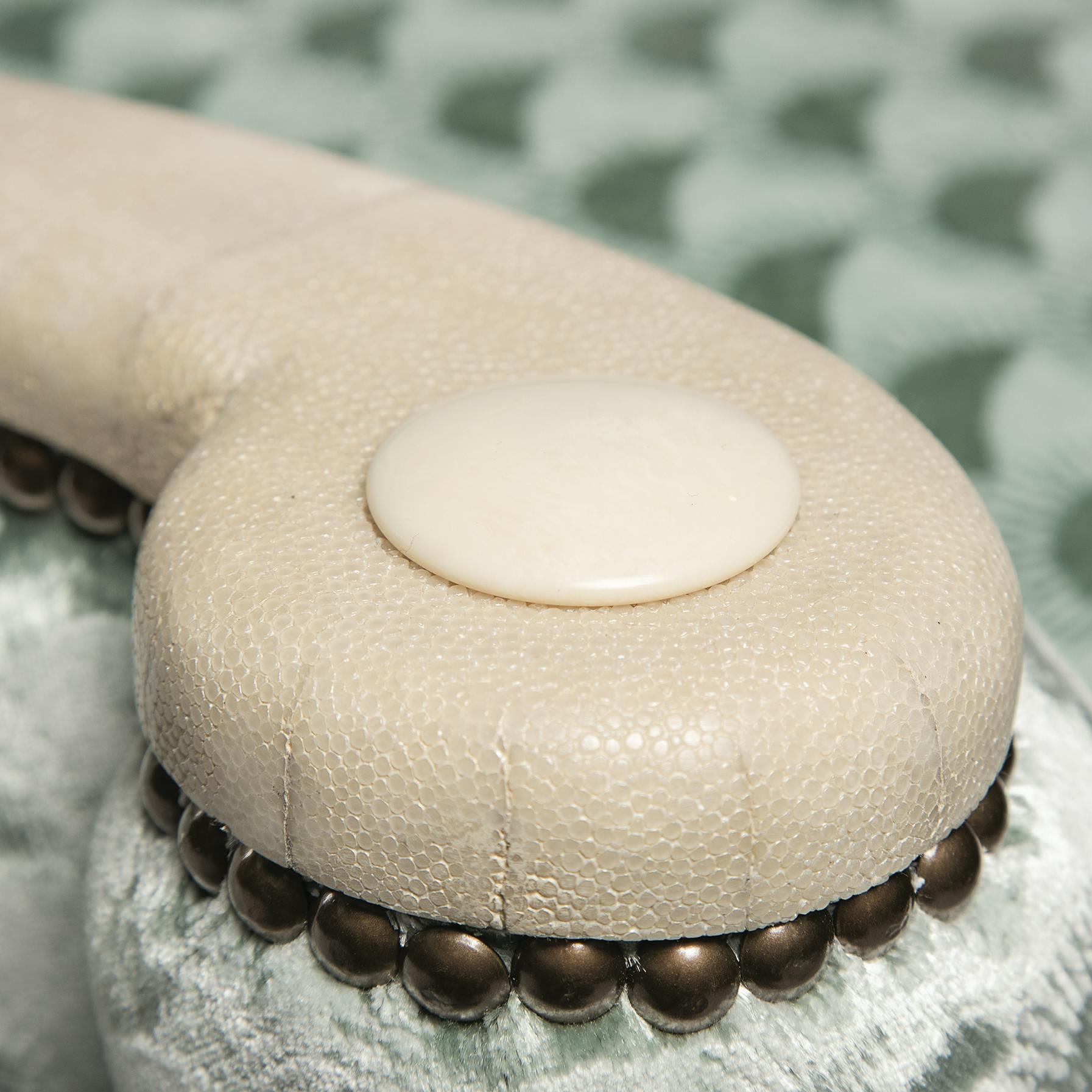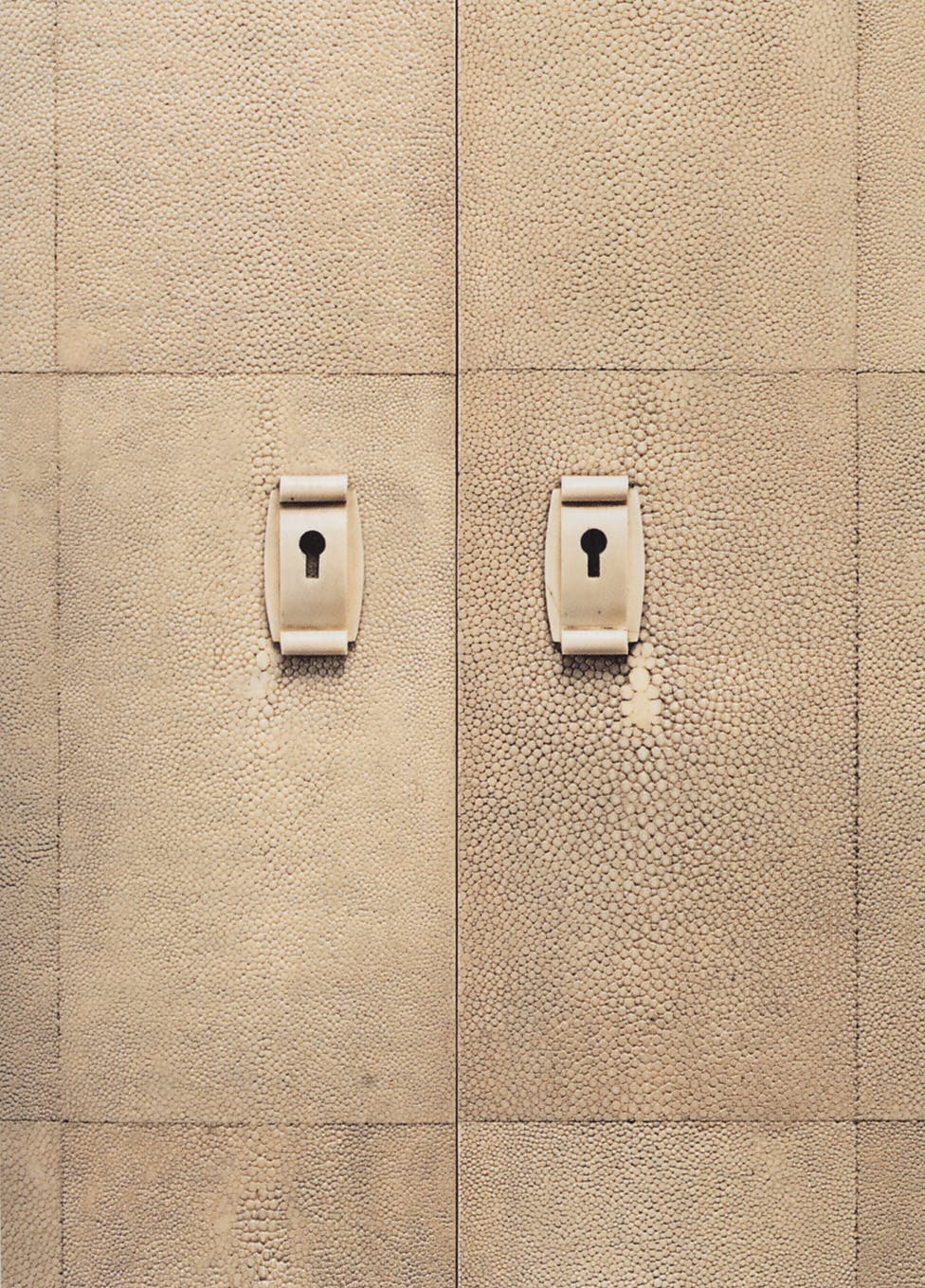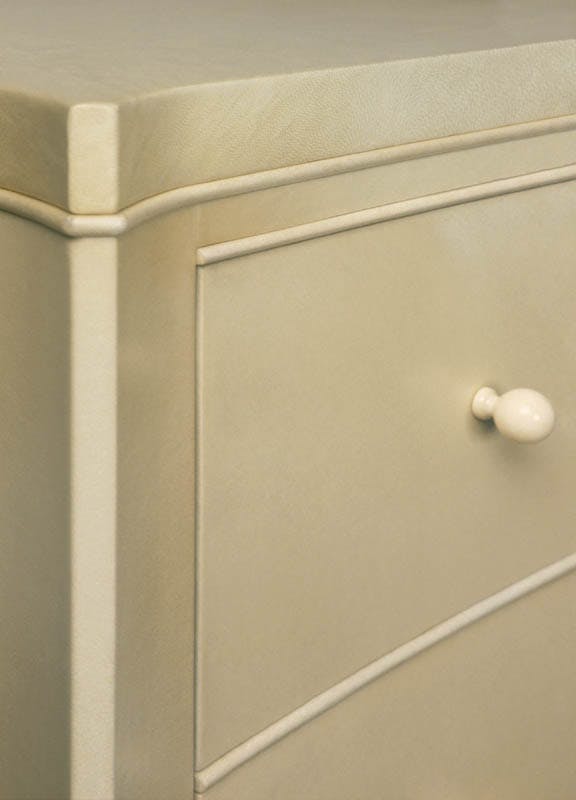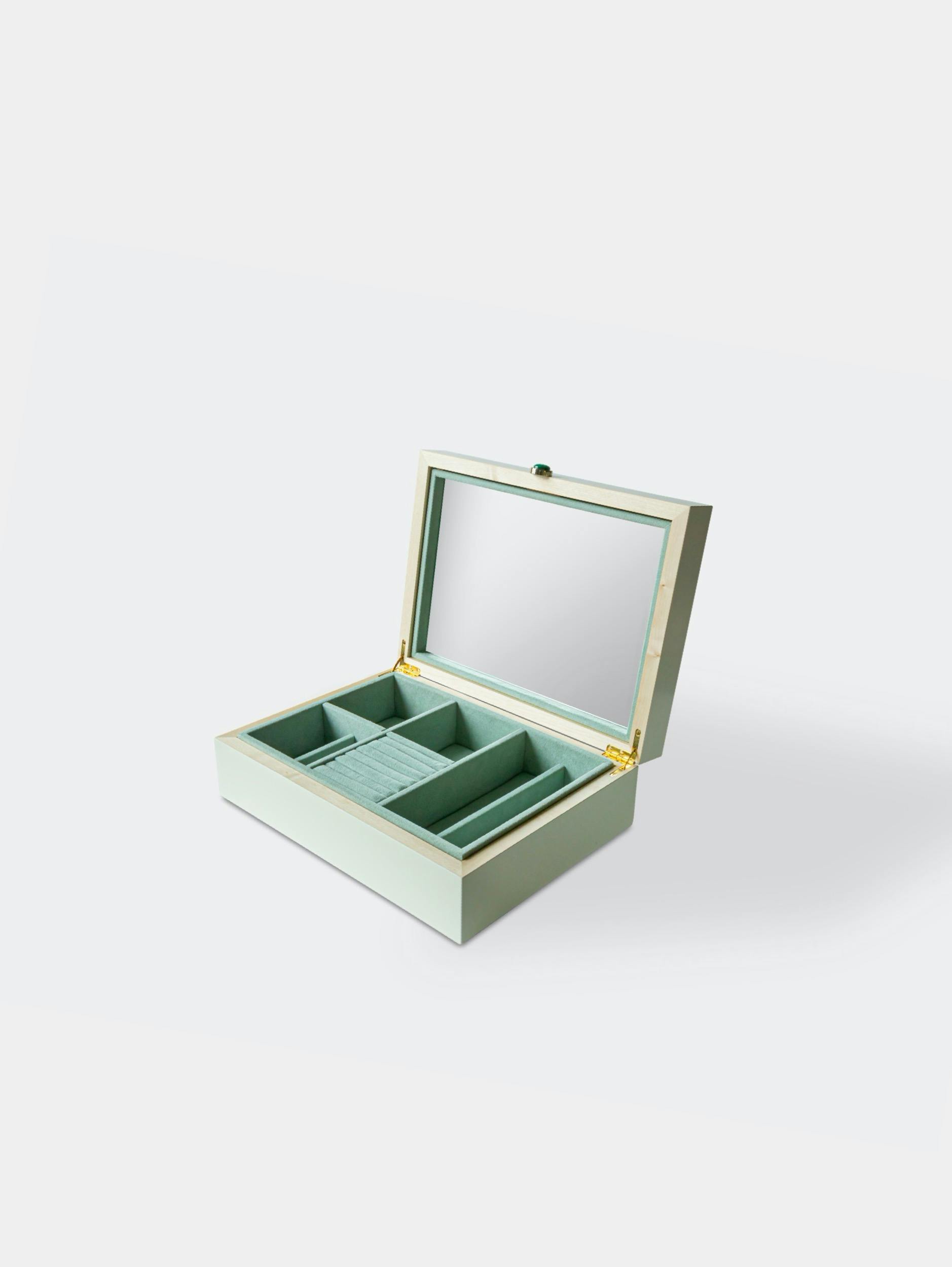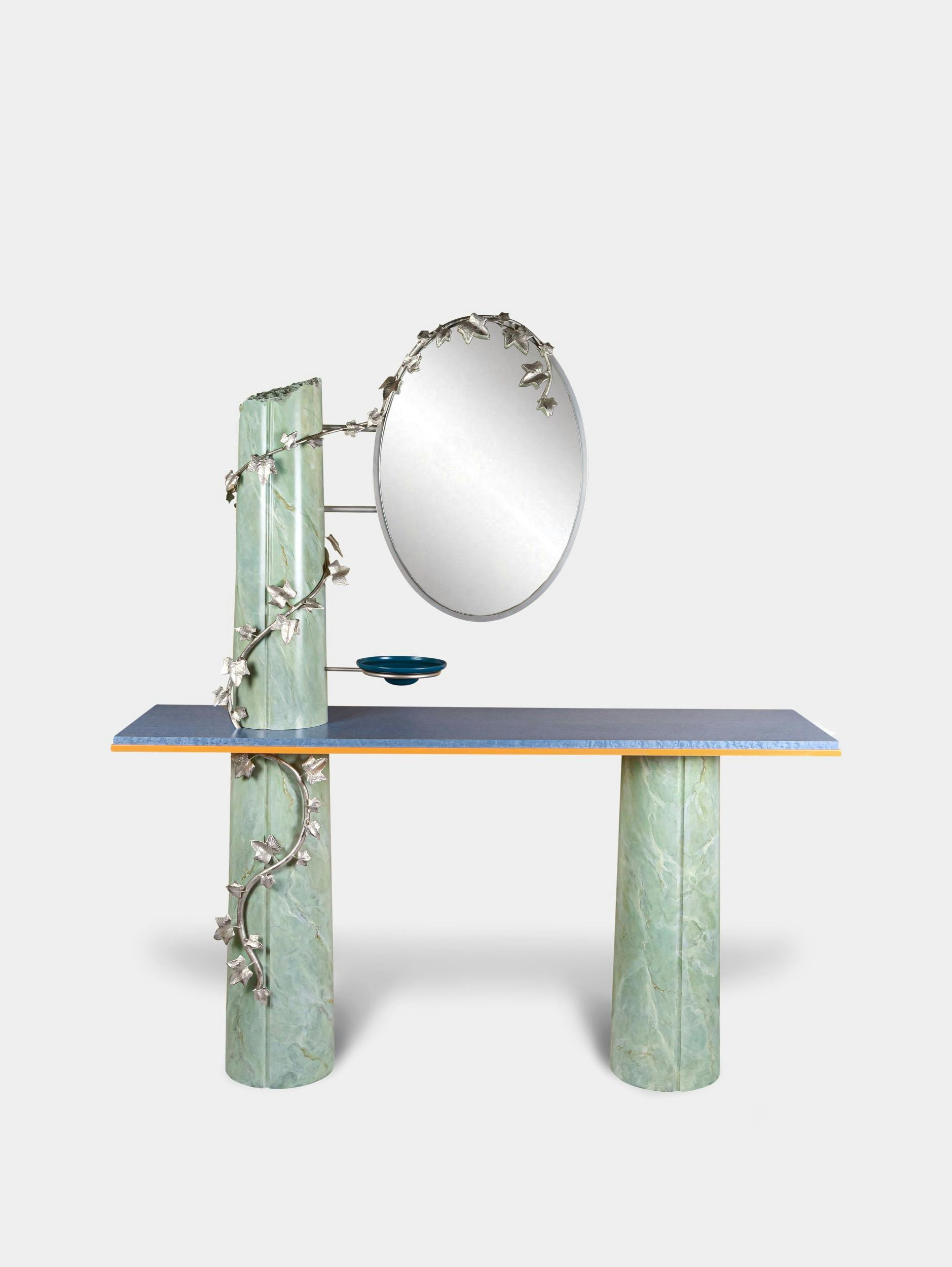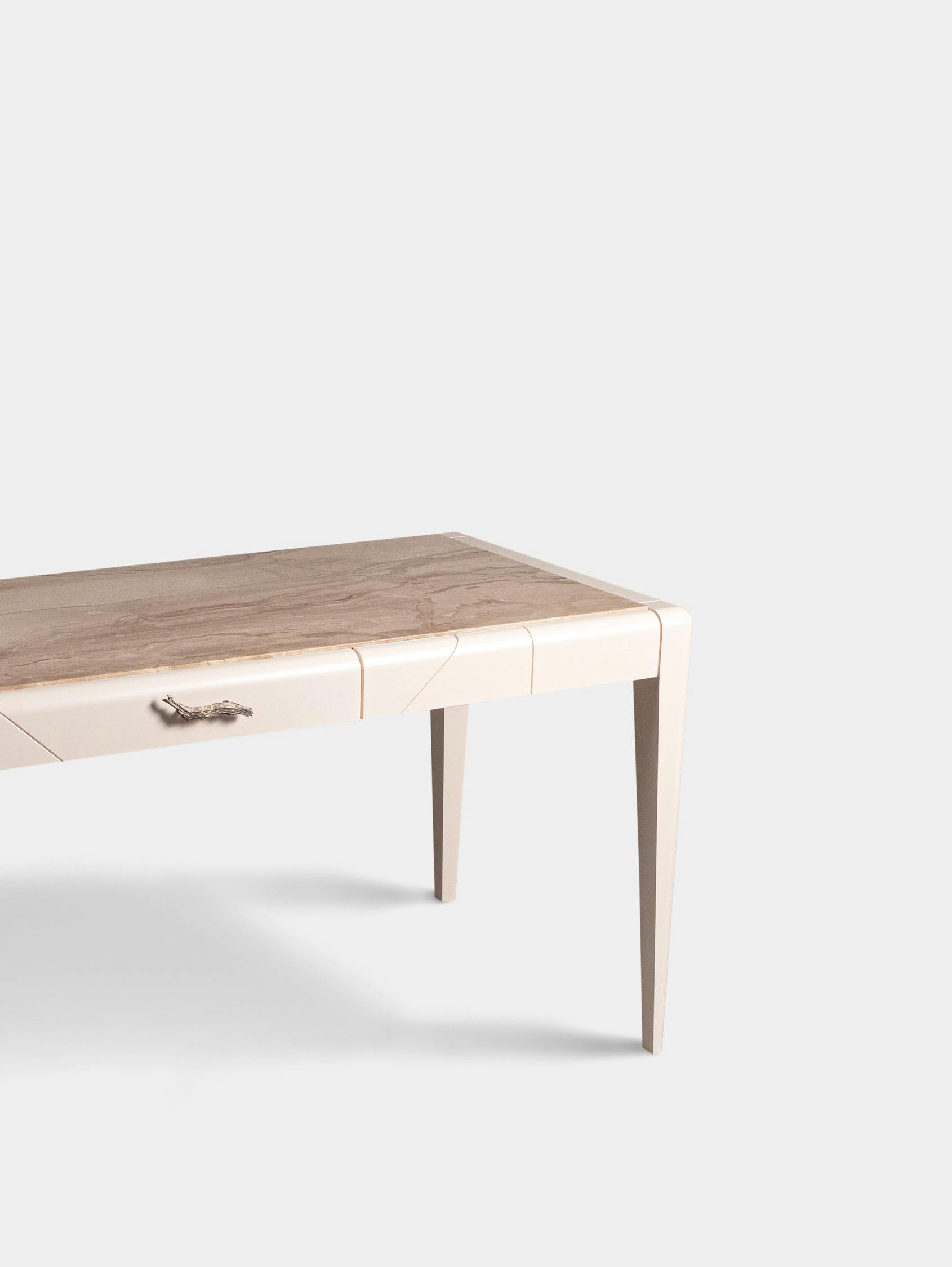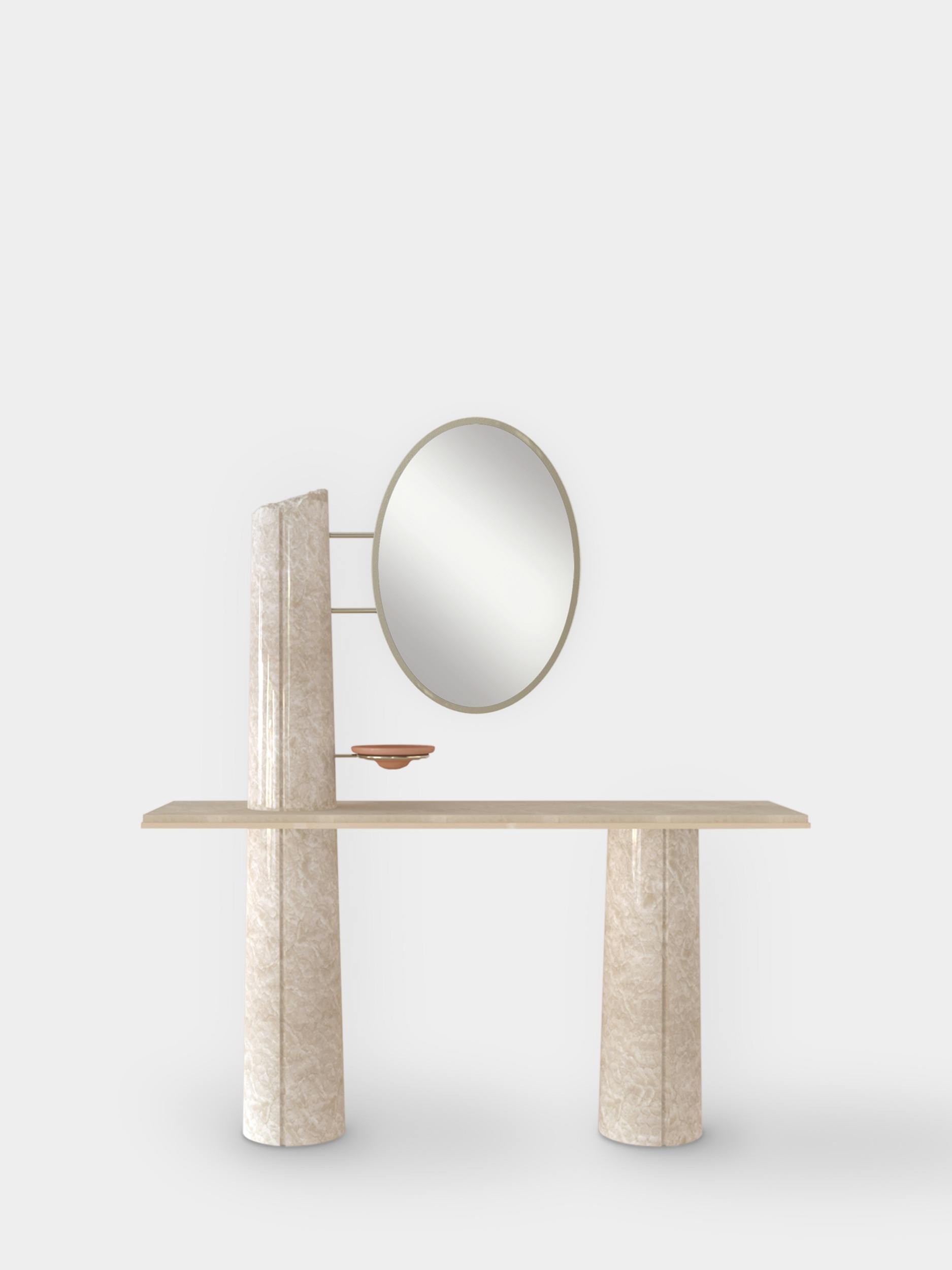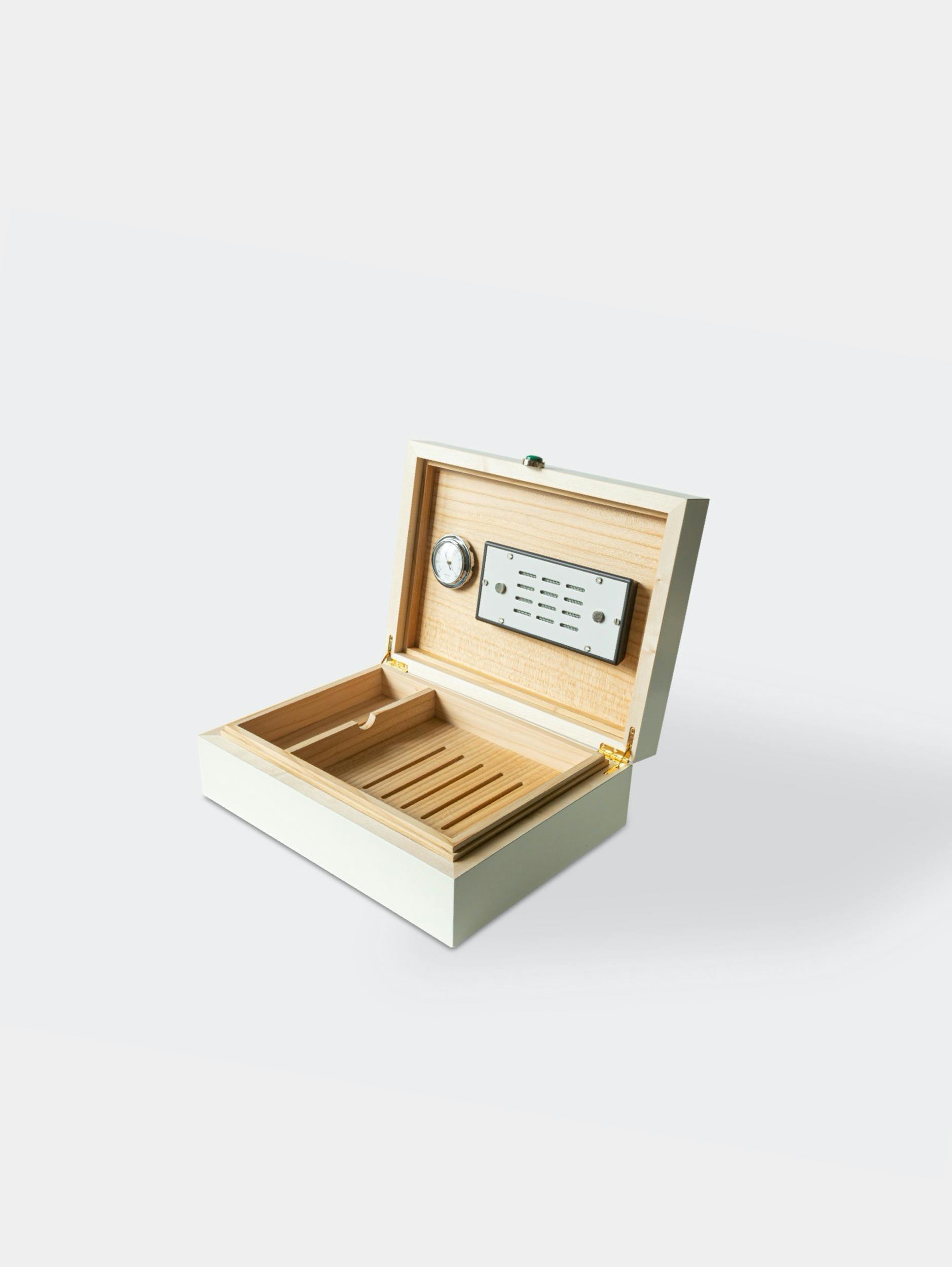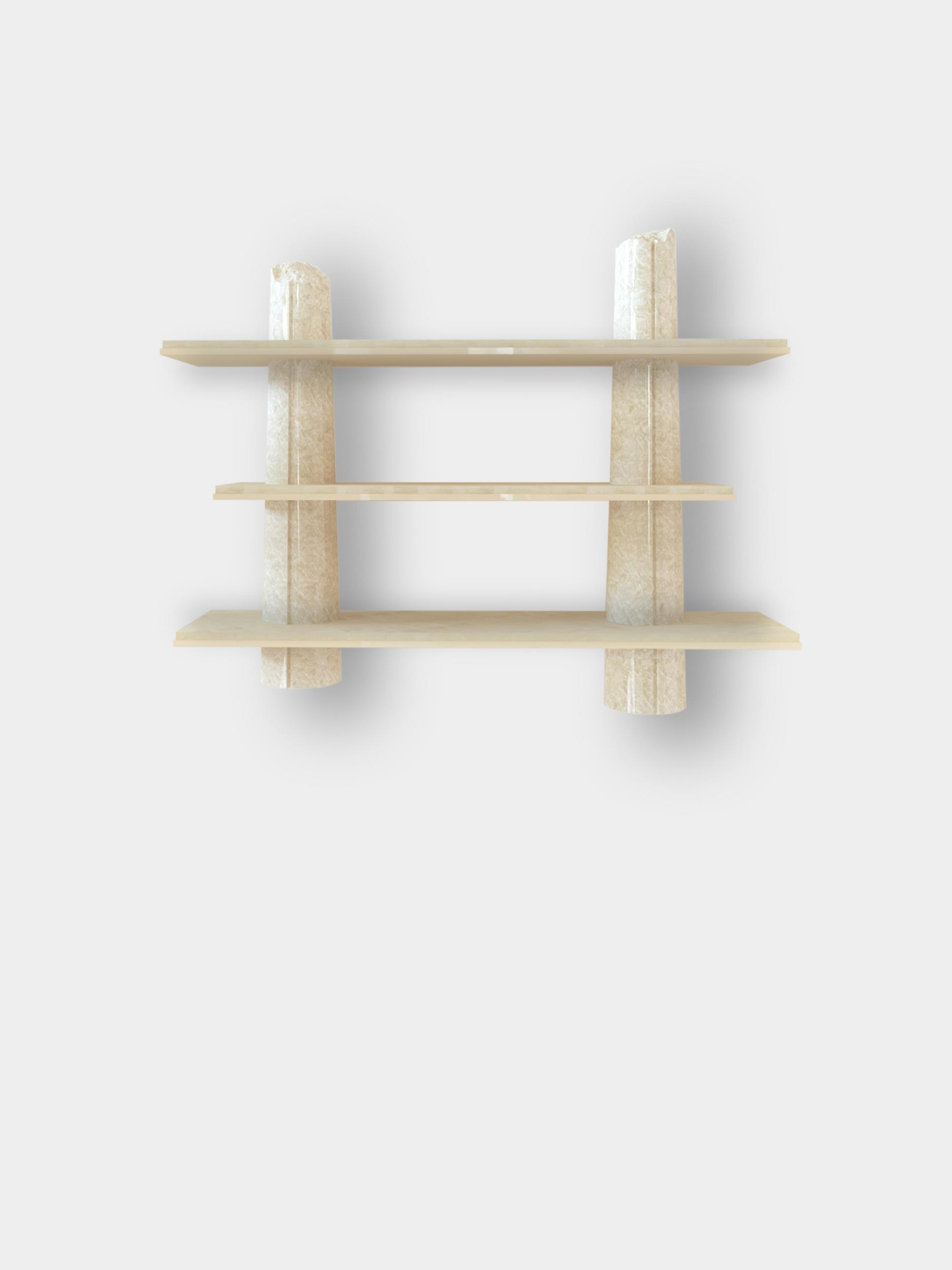In 18th-century France, master sheath-maker Jean-Claude Galluchat managed to find the tanning and dyeing technique that allowed him to adorn small objects with the substance, which why it is known today in French as galuchat. The skin’s Eastern origins made it a rare and expensive material and it was thus only used for luxury products, such as jewelry boxes and sewing or writing cases. Madame de Pompadour, the official chief mistress to Louis XV, and Madame Émilie du Châtelet, a French natural philosopher and mathematician, were very fond of shagreen and contributed to its expansion and image as an elegant, sophisticated material.
While public interest in the art of shagreen waned in the 19th century, it saw a resurgence during the Roaring Twenties, when the need for luxury and liberties – generated by the deprivations of war – skyrocketed. The great creative minds in the field of decorative arts featured shagreen on their furniture pieces, or even complete furniture ensembles. For designers and decorators such as Paul Iribe, André Groult, Jules Leleu, and Jean-Michel Frank, it became a favorite material. At this time, shagreen was synonymous with modern elegance, at once chic and streamlined, sophisticated yet simple. It retains this image to this day and merits such veneration, as this art requires exceptional skill and savoir-faire.
